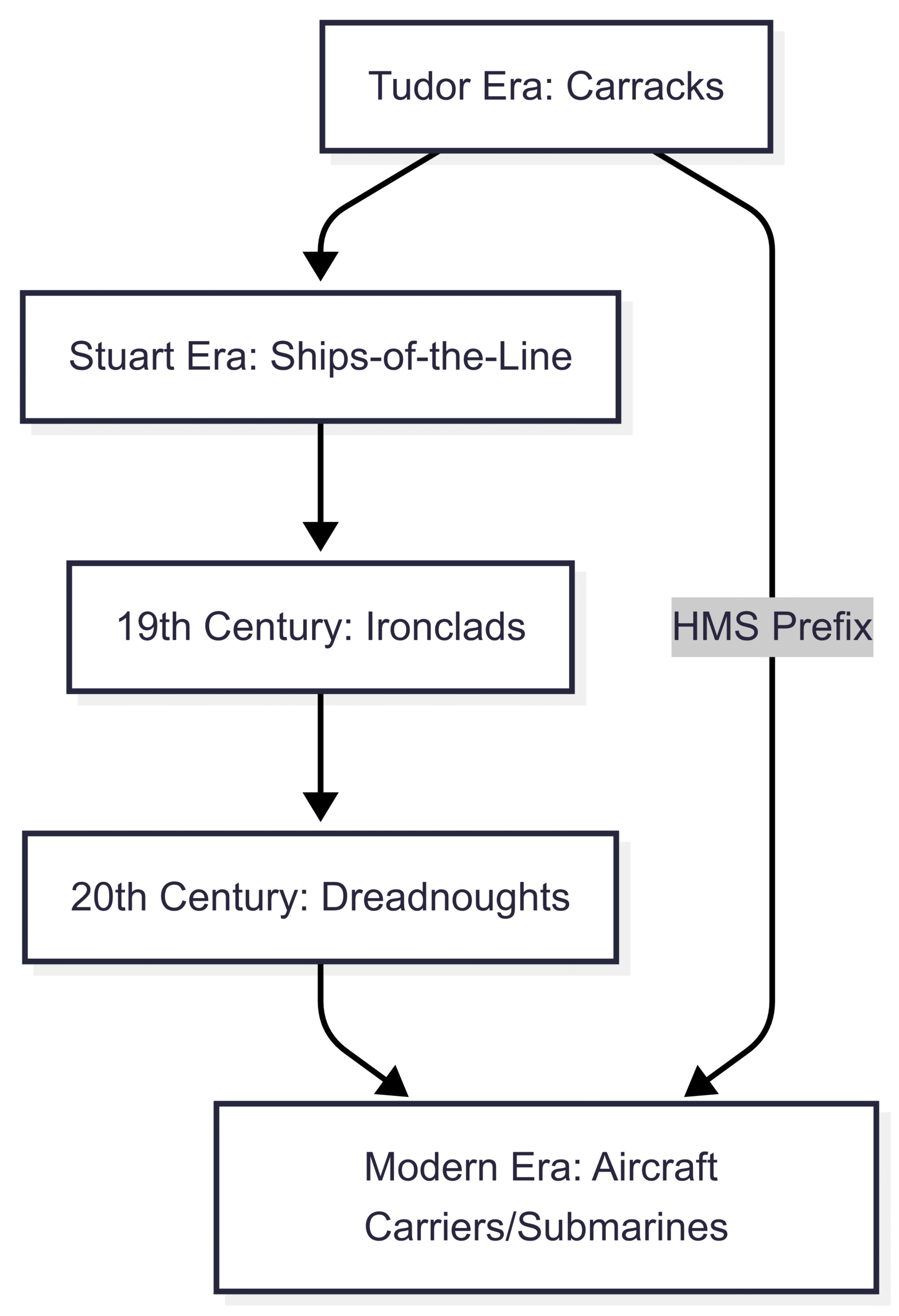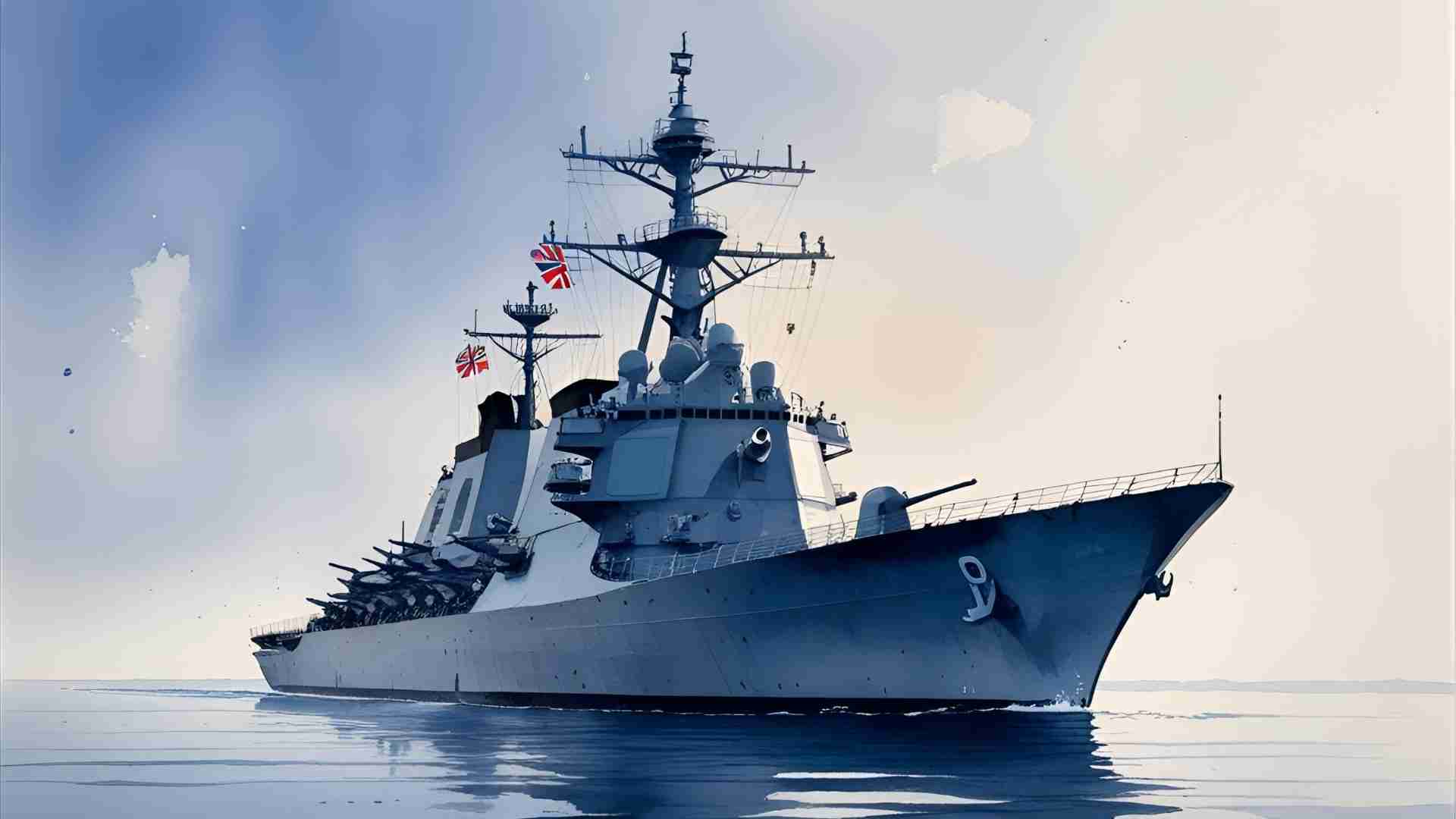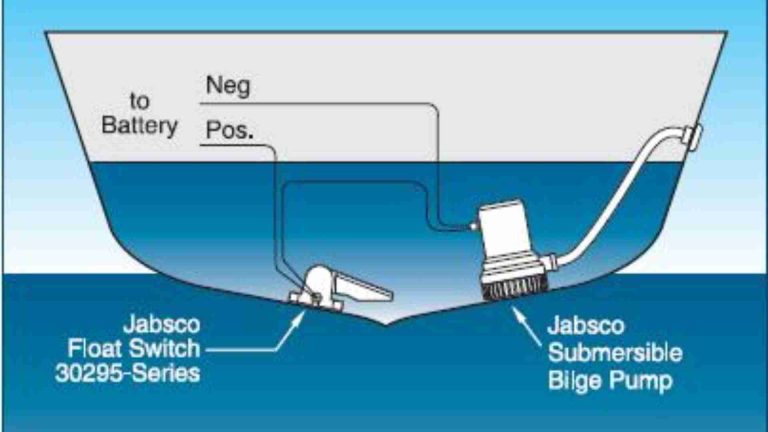Why do some ships have RMS or HMS in the name?
Discover why ships carry prefixes like RMS and HMS, their historical significance, and meanings across navies. A deep dive into maritime naming conventions.
Ship prefixes like RMS and HMS are more than just letters before a vessel’s name—they encapsulate history, purpose, and ownership. These abbreviations, rooted in centuries-old maritime traditions, serve as a shorthand to identify a ship’s role, nationality, or affiliation. While RMS (Royal Mail Ship) and HMS (His/Her Majesty’s Ship) are among the most recognized, their origins and applications reveal a fascinating story of naval and commercial evolution. This article explores the historical context, significance, and global variations of these prefixes, focusing on their use in the British maritime tradition and beyond.
The Origins of Ship Prefixes
Ship prefixes have long served as identifiers, distinguishing vessels by their purpose, propulsion, or ownership. In the age of sail, when maritime trade and warfare dominated global politics, clear identification was crucial for both operational and diplomatic reasons. Prefixes like HMS and RMS emerged as standardized markers, particularly in the British Empire, which boasted the world’s most powerful navy and merchant fleet during its peak.
The use of prefixes became widespread as navies and commercial fleets grew in complexity. They provided clarity in communication, especially in international waters, where distinguishing between military and civilian vessels or identifying a ship’s nationality could prevent misunderstandings or conflicts. Today, prefixes remain a critical part of maritime nomenclature, though their usage varies by country and context.
HMS: His/Her Majesty’s Ship
The prefix HMS, standing for “His/Her Majesty’s Ship,” is exclusive to the British Royal Navy and reflects the monarchy’s historical authority over the fleet. The designation signifies that a vessel is commissioned into the service of the reigning monarch, who is the ceremonial head of the Royal Navy. The “His” or “Her” depends on the monarch’s gender—currently, with King Charles III on the throne, it is “His Majesty’s Ship.”
The origins of HMS trace back to the late 18th century. While the Royal Navy itself was formalized in 1660 following the Restoration of King Charles II, the abbreviated prefix HMS did not become standard until around 1789, with the earliest recorded use attributed to HMS Phoenix. Before this, ships were often referred to in full as “His Majesty’s Ship” or “His Britannic Majesty’s Ship” in official documents. The abbreviation streamlined communication, especially in written records, as the Navy expanded.
The HMS prefix is not just a formality; it carries significant cultural and historical weight. It denotes a vessel’s role in protecting British interests, from exploration and trade to warfare. Iconic ships like HMS Victory, Lord Horatio Nelson’s flagship at the Battle of Trafalgar in 1805, and HMS Dreadnought, the revolutionary battleship launched in 1906, exemplify the prestige associated with the prefix. HMS Victory, a 104-gun first-rate ship-of-the-line, remains a commissioned vessel today, preserved as a living symbol of Britain’s naval heritage.
RMS: Royal Mail Ship
In contrast, RMS stands for “Royal Mail Ship” or “Royal Mail Steamer,” a designation given to vessels contracted by the British government to carry mail for the Royal Mail Service. This prefix emerged around 1840, during the height of the British Empire’s global trade and communication networks. The RMS designation was typically awarded to the fastest and most reliable ships of the era, often ocean liners, which played a critical role in connecting Britain with its colonies and other nations.
The RMS prefix was not just a mark of prestige but also a lucrative contract for shipping companies. Carrying mail was a vital function, ensuring timely communication across vast distances before the advent of air mail. The RMS Titanic, perhaps the most famous ship to bear this prefix, was not only a luxury passenger liner but also a mail carrier, transporting letters and parcels between Europe and the United States in 1912. Similarly, the RMS Queen Mary 2, launched in 2004 by the Cunard Line, continues to carry the RMS designation as a nod to this historical role, even though mail transport is no longer its primary function.
The decline of the RMS prefix began in the 1920s with the rise of air mail, which offered faster delivery. By the post-World War II era, the British government largely phased out mail contracts for ocean-going vessels, rendering the RMS designation rare. Today, it persists mainly as a historical tribute on select ships.
Historical Context of HMS and RMS
To understand the significance of HMS and RMS, it’s essential to explore their historical roots within the British maritime tradition.
The Royal Navy and HMS
The British Royal Navy, formally established in 1660, evolved from the “King’s Ships” of the medieval and Tudor periods. Before 1660, English warships were often the personal property of the monarch, collectively referred to as “the king’s ships.” The prefix HMS was not used during this time, as the Navy was not yet a formalized institution. Instead, ships often carried names like “Trinity” or “Grace Dieu,” sometimes with the affix “of the Tower” (akin to a proto-prefix) to denote royal ownership.
The Restoration of King Charles II marked a turning point, as the Navy became a state institution, and the monarch’s ceremonial role as its head was solidified. The HMS prefix emerged as a way to standardize nomenclature and reflect the monarchy’s authority. By the late 18th century, as the Royal Navy grew into the world’s preeminent naval force, HMS became a universally recognized symbol of British naval power.
The Royal Navy’s ships were categorized by rates, based on the number of guns or crew, with first-rate ships like HMS Victory carrying the most firepower. The prefix HMS applied to all commissioned vessels, from massive ships-of-the-line to smaller sloops and frigates. Today, it also extends to submarines (sometimes rendered HMS/m) and shore establishments, known as “stone frigates,” like HMS Excellent, a training facility in Portsmouth.
The Royal Mail Service and RMS
The RMS designation reflects Britain’s efforts to maintain efficient global communication during the 19th century. The Royal Mail Service, established in 1516, expanded significantly with the growth of the British Empire. By the 1840s, steamships revolutionized maritime transport, offering speed and reliability that sailing ships could not match. The government began contracting private shipping companies, such as Cunard and White Star Line, to carry mail, awarding the RMS prefix to these vessels.
These ships were often the pinnacle of engineering for their time. The RMS Titanic, for example, was a technological marvel, equipped with advanced safety features (though tragically insufficient) and luxurious amenities. Its mail-carrying role was a point of pride, underscoring its importance beyond passenger transport. The decline of RMS designations post-World War II reflects the shift to air mail and the reduced reliance on sea transport for postal services.
Global Variations of Ship Prefixes
While HMS and RMS are distinctly British, other nations have adopted similar prefixes to denote their naval and civilian vessels. These prefixes often reflect national identity, governance, or specific maritime roles.
Commonwealth Navies
Commonwealth nations, sharing the British monarch as their head of state, have adopted variations of the HMS prefix:
- HMCS (His/Her Majesty’s Canadian Ship): Used by the Royal Canadian Navy, as seen in ships like HMCS Halifax.
- HMAS (His/Her Majesty’s Australian Ship): Employed by the Royal Australian Navy, e.g., HMAS Sydney.
- HMNZS (His/Her Majesty’s New Zealand Ship): Used by the Royal New Zealand Navy, such as HMNZS Wellington.
- HMBS (His/Her Majesty’s Bahamian Ship): Found in the Royal Bahamas Defence Force.
These prefixes maintain the tradition of linking naval vessels to the monarchy, adapted to each nation’s identity.
Other Navies
Many countries use their own prefixes to signify military or government vessels:
- USS (United States Ship): Used for commissioned U.S. Navy vessels, like USS Enterprise. Non-commissioned support ships carry USNS (United States Naval Ship).
- KDM (Kongelige Danske Marine): Translated as HDMS (His/Her Danish Majesty’s Ship) in English, used by the Royal Danish Navy.
- SMS (Seiner Majestät Schiff): Historically used by the Imperial German Navy and Austro-Hungarian Navy, meaning “His Majesty’s Ship.”
- HNLMS (His/Her Netherlands Majesty’s Ship): Used by the Royal Netherlands Navy, with the Dutch equivalent Zr.Ms. or Hr.Ms. depending on the monarch’s gender.
Some navies, such as those of France, China, and Russia, do not use prefixes internally, though NATO assigns designations like FS (French Ship) or RFS (Russian Federation Ship) for international clarity.
Civilian Prefixes
Civilian prefixes are more varied and often denote a vessel’s propulsion or purpose:
- SS (Single-Screw Ship): Originally for steamships, now a general civilian designation.
- MV (Motor Vessel): Common for merchant ships, including cruise liners like MV Icon of the Seas.
- RV (Research Vessel): Used for scientific ships, such as RV Sally Ride.
- FV (Fishing Vessel): Increasingly used to specify fishing boats.
- MY (Motor Yacht): For large recreational vessels, like MY Lady Moura.
These prefixes are less consistently applied than military ones, as civilian vessels often operate without them, especially smaller craft.
Evolution of Ship Types and Prefixes
The types of ships bearing HMS and RMS have evolved significantly over time, reflecting advancements in maritime technology and changes in naval strategy.
HMS and Naval Evolution
The Royal Navy’s ships have ranged from wooden sailing vessels to modern nuclear-powered submarines. In the Tudor period (1485–1603), ships like the Mary Rose (1509) were carracks, heavily armed sailing vessels. By the 17th century, the Navy introduced galleasses and galleons, which combined sail and oar propulsion with broadside guns. The HMS Dreadnought (1906) marked a revolutionary shift, introducing all-big-gun armament and steam turbine propulsion, rendering previous battleships obsolete.
The following table illustrates the evolution of HMS-designated ship types:
| Era | Ship Type | Example | Key Features |
|---|---|---|---|
| Tudor (1485–1603) | Carrack | Mary Rose (1509) | Sail-powered, heavy guns, multi-deck |
| Stuart (1603–1714) | Ship-of-the-Line | Prince Royal (1610) | Large, heavily armed, multi-deck |
| 19th Century | Ironclad/Pre-Dreadnought | HMS Warrior (1860) | Steam-powered, iron armor |
| 20th Century | Dreadnought Battleship | HMS Dreadnought (1906) | All-big-gun, steam turbine |
| Modern | Aircraft Carrier/Submarine | HMS Queen Elizabeth (2014) | Nuclear propulsion, advanced radar |

RMS and Commercial Evolution
RMS vessels were typically the fastest and most advanced ships of their time, often doubling as passenger liners. The RMS Titanic (1912) and RMS Lusitania (1907) were icons of luxury and speed, equipped with steam turbines and opulent interiors. The RMS Queen Mary 2, a modern cruise liner, continues this tradition, blending historical prestige with contemporary luxury.
| Ship | Launched | Tonnage | Key Features |
|---|---|---|---|
| RMS Titanic | 1912 | 46,328 GRT | Steam turbines, luxury accommodations, mail |
| RMS Lusitania | 1907 | 31,550 GRT | High speed, transatlantic mail and passengers |
| RMS Queen Mary 2 | 2004 | 148,528 GT | Modern cruise liner, historical RMS designation |
Why Prefixes Matter
Ship prefixes like HMS and RMS serve practical and symbolic purposes. Practically, they provide immediate identification of a vessel’s role and ownership, aiding navigation and communication in busy maritime environments. Symbolically, they reflect national pride, historical legacy, and the evolution of maritime technology.
For example, the HMS prefix underscores the Royal Navy’s centuries-long dominance, while RMS highlights Britain’s role in global communication and trade. In international waters, prefixes help avoid confusion, ensuring that a ship’s nationality and purpose are clear to other vessels and authorities.
Modern Usage and Exceptions
While HMS remains a cornerstone of Royal Navy nomenclature, RMS is now largely a historical designation. Some modern ships, like the RMS Queen Mary 2, retain it for tradition, but most civilian vessels use prefixes like MV or SS. Many smaller vessels, such as ferries or private yachts, omit prefixes entirely.
Globally, prefix usage varies. Navies like those of France and China avoid prefixes internally, while others, like the U.S. Navy, strictly adhere to them. NATO’s standardized prefixes (e.g., FS for French Ship) ensure clarity in multinational operations.
Conclusion
The prefixes HMS and RMS are more than abbreviations—they are windows into the maritime history of Britain and the world. HMS reflects the enduring legacy of the Royal Navy, tied to the monarchy and its role in global power projection. RMS, though now rare, highlights the importance of mail transport in the age of empire and the technological prowess of the ships that bore it. Understanding these prefixes and their counterparts in other nations reveals the intricate tapestry of maritime tradition, where every letter before a ship’s name tells a story of purpose, pride, and progress.
This article provides a comprehensive, SEO-optimized exploration of ship prefixes, focusing on HMS and RMS while incorporating historical context, global variations, and visual aids like tables and a Mermaid chart. It avoids unnecessary fluff, ensuring clarity and relevance for readers and search engines alike.
Share Why do some ships have RMS or HMS in the name? with your friends and Leave a comment below with your thoughts.
Read Tritoon Vs. Pontoon: How Are They Different? Guide until we meet in the next article.






